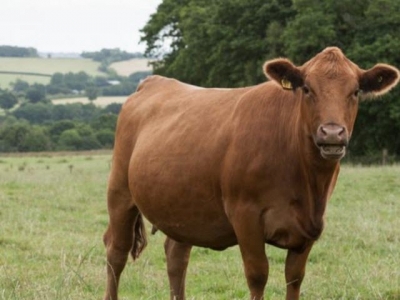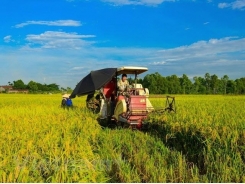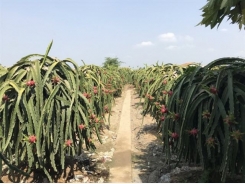Healthy soils lift animal weights

Animal performance on individual fields was positively associated with level of soil organic carbon, a common measure of soil "health” for sustainable farming.
Photo by Rothamsted Research
Individual pastures on livestock farms yield surprisingly dissimilar benefits to a farm’s overall agricultural income, and those differences are most likely attributable to the varying levels of “soil health” provided by its grazing livestock, according to a new study.
The study, produced by an interdisciplinary team of 13 scientists and two doctoral students from Rothamsted Research in the U.K., evaluated how efficiently nutrients are used on a livestock farm on a field-by-field basis and linked soil health to animal growth.
The team developed a method to derive the contribution of individual fields to an animal’s growth and, in the process, has opened up the possibility of using field-scale metrics as indicators of animal performance and agricultural productivity, an announcement said. The findings appear in the journal Animal.
“The prospect that commercial livestock producers could improve their productivity by purely changing rotational patterns is exciting,” said study leader Taro Takahashi, an agricultural economist at Rothamsted’s North Wyke Farm Platform (NWFP). “Unlike many alternative technologies, this will not require any capital investment.”
The majority of livestock farms in the U.K. operate rotational grazing, which involves moving animals from one field to another. While this practice supplies more fresh forage to animals throughout the season, it makes farming systems more difficult to monitor and optimize, said Takahashi, who is also senior lecturer in sustainable livestock systems and food security with the Bristol Veterinary School at the University of Bristol in the U.K.
The problem has been the difficulty of linking an animal’s performance to field measurements, such as soil health, because animals spend only a fraction of time in each field, which may also be used to produce silage for winter. Under such complexity, collating required information manually was not practical; the latest method provides a shortcut.
The NWFP team found that animal performance on individual fields was positively associated with the level of soil organic carbon, a common measure of soil "health" for sustainable farming. The team also discovered that fields grazed more intensively had healthier soils and were less prone to water and nutrient losses.
“Without our unique experimental design to separate hydrological flows from individual grazing fields, you couldn’t accurately quantify any nutrients being lost, as the majority would be dissolved in water,” noted Paul Harris, one of the study’s authors and the principal investigator at North Wyke, which consists of three instrumented farms covering 63 hectares.
“The correlation between soil health and animal performance is a major finding that confirms the huge amount of anecdotal evidence linking soil parameters and live weight gain,” said Michael Lee, head of the North Wyke department of sustainable agriculture sciences and also professor of sustainable livestock systems at the Bristol Veterinary School. “This study illustrates the multifaceted interactions between soil health, ecological surroundings and grazing animals that are so often overlooked in favor of more simplistic narratives.”
NWFP is a U.K. National Capability funded by the Biotechnology & Biological Sciences Research Council (BBSRC); its facility and data sets are open to all researchers. This study was carried out as part of Soil to Nutrition, one of Rothamsted’s five institute strategic programs that also is supported by BBSRC.
Rothamsted Research, founded in 1843, is the longest-running agricultural research institute in the world. It works from gene to field with a history of groundbreaking discoveries, from crop treatment to crop protection and from statistical interpretation to soil management. Through independent science and innovation, Rothamsted makes contributions to improving agri-food systems in the U.K. and internationally.
Có thể bạn quan tâm
Phần mềm

Phối trộn thức ăn chăn nuôi

Pha dung dịch thủy canh

Định mức cho tôm ăn

Phối trộn phân bón NPK

Xác định tỷ lệ tôm sống

Chuyển đổi đơn vị phân bón

Xác định công suất sục khí

Chuyển đổi đơn vị tôm

Tính diện tích nhà kính

Tính thể tích ao hồ




 Safe fruit & vegetables struggling to find favor
Safe fruit & vegetables struggling to find favor  International know-how to help local fruit exports
International know-how to help local fruit exports